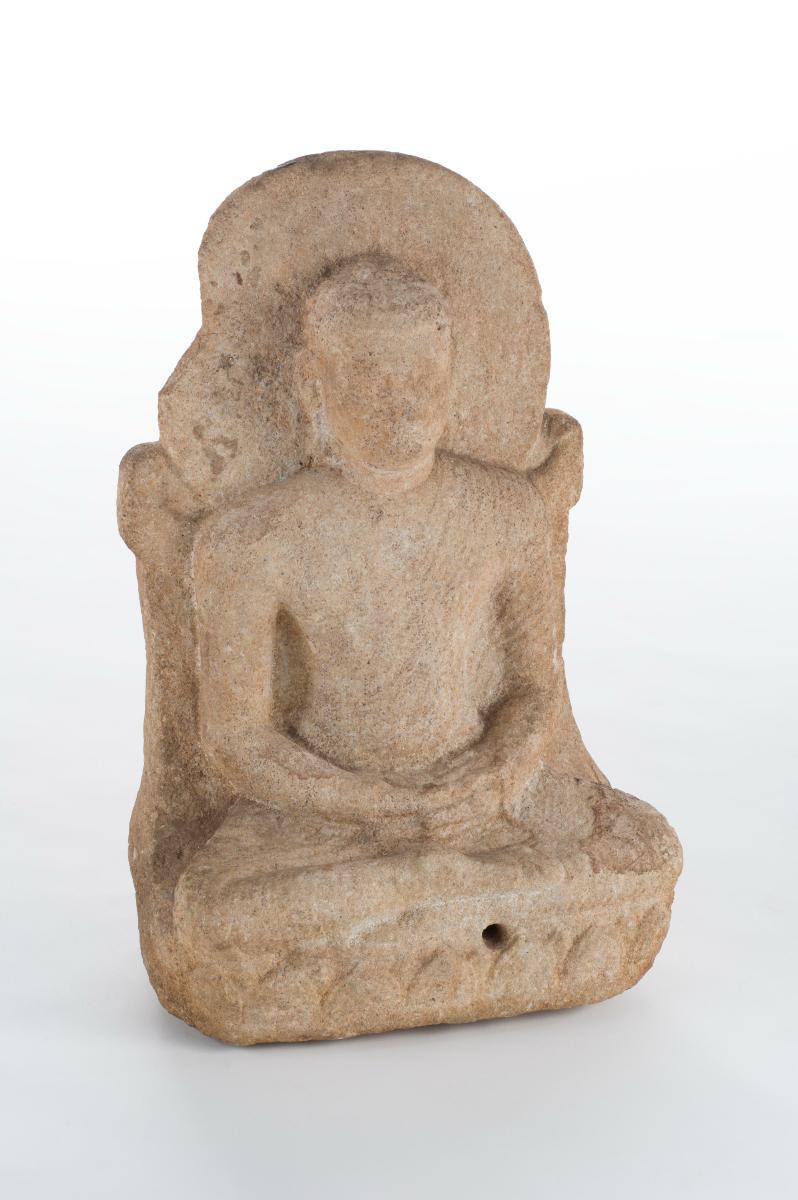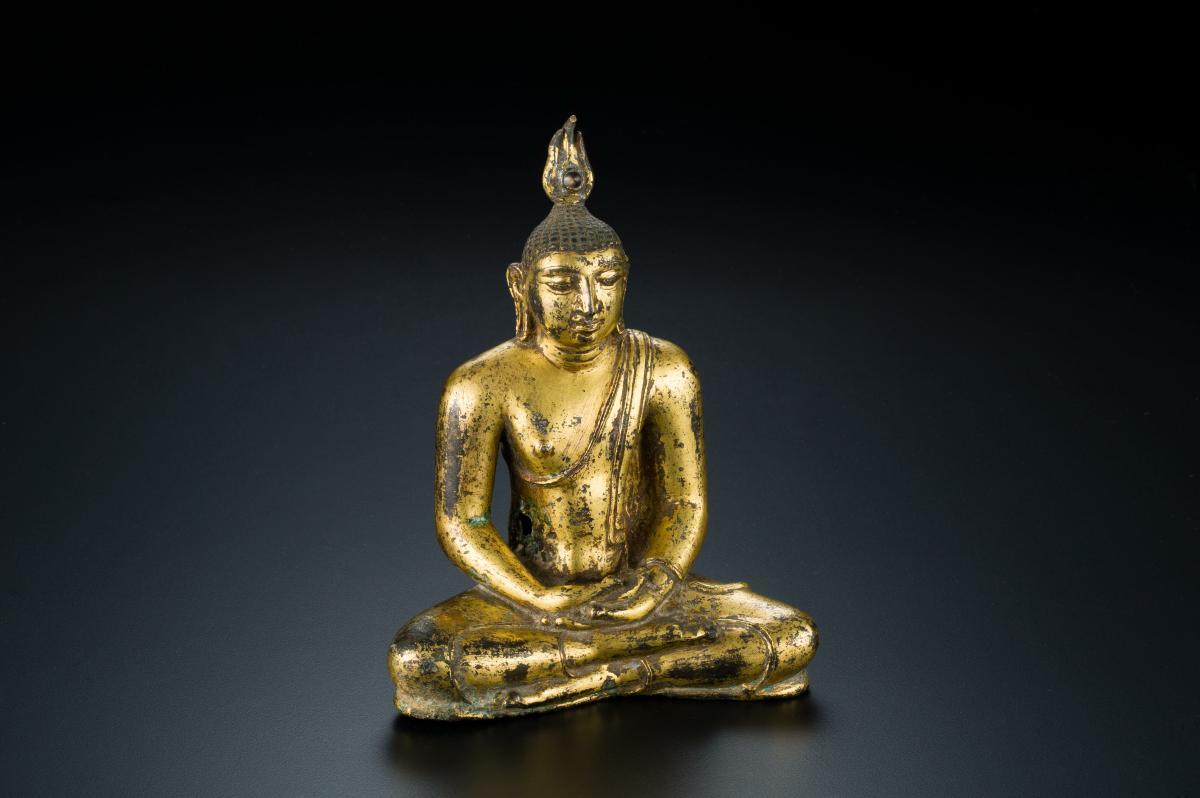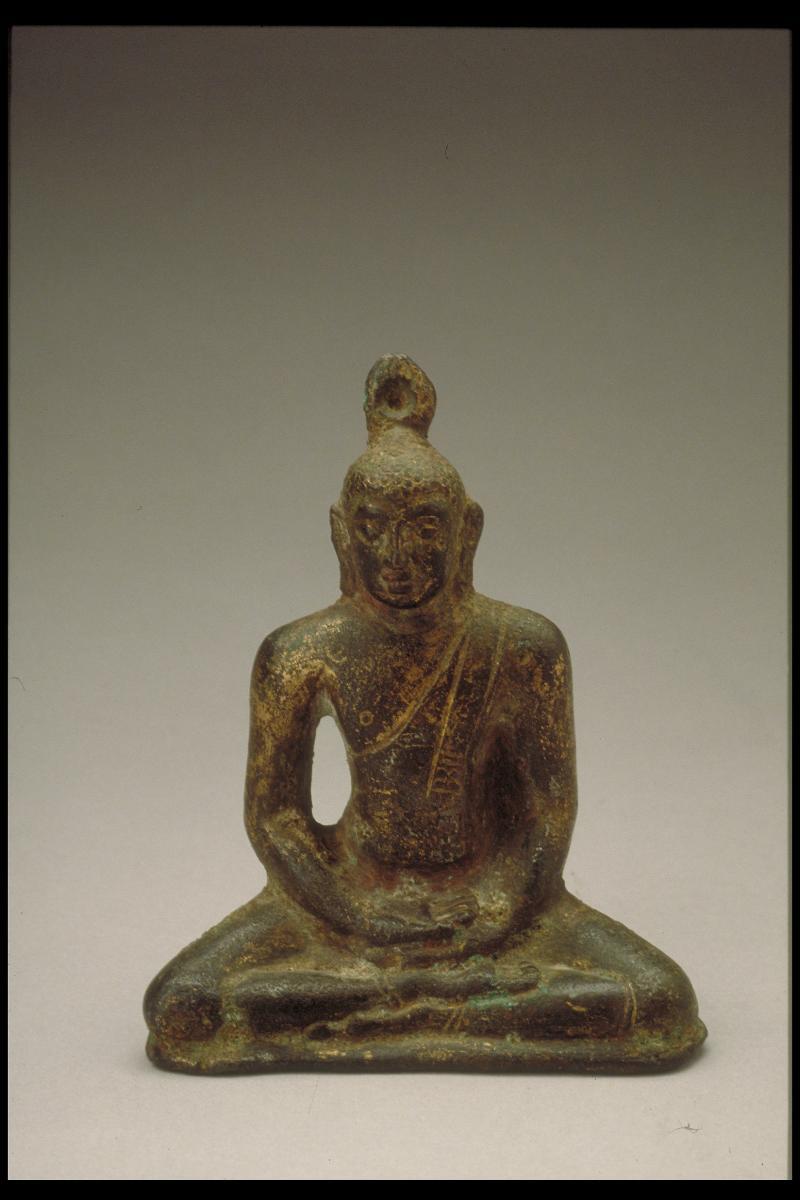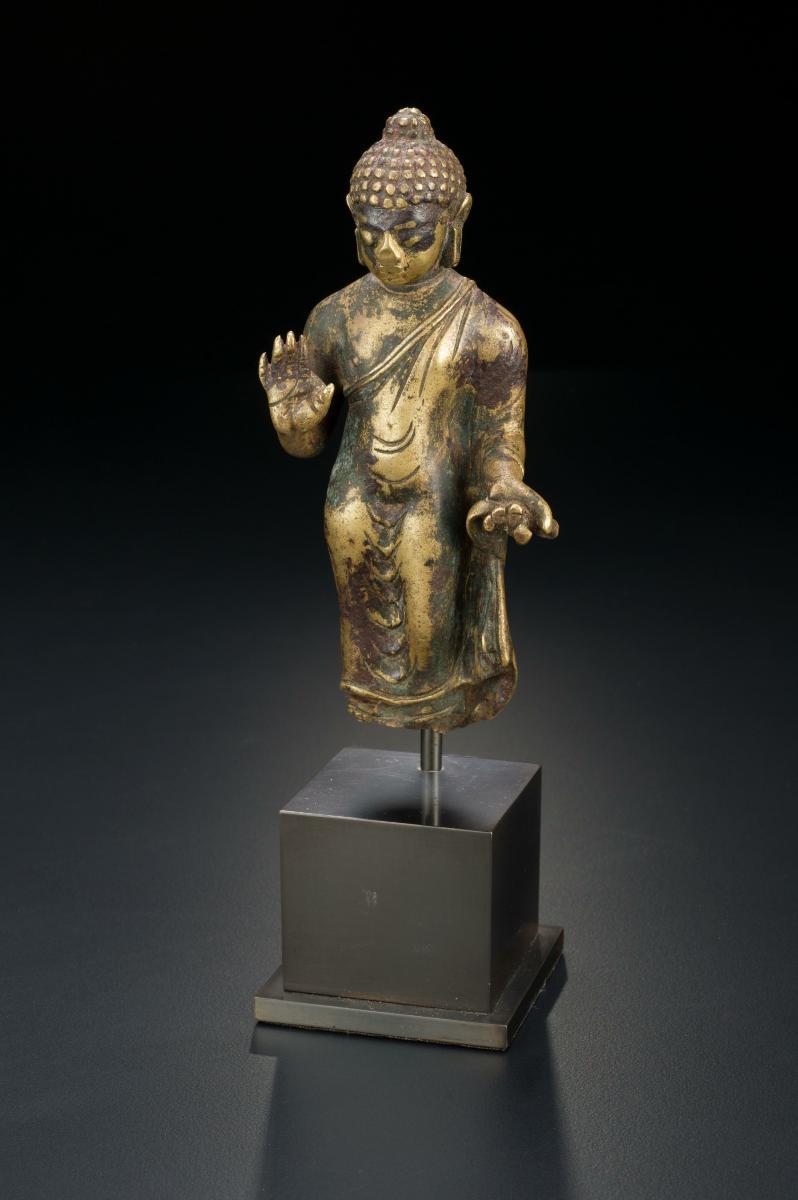Buddhism since first introduced has thrived until present times in Sri Lanka making it the longest surviving Buddhist tradition in Asia. Anuradhapura was a flourishing and important Buddhist centre in ancient Sri Lanka. Anuradhapura and Pollonnaruwa, early capitals of ancient Sri Lanka, also had extensive links with Southeast Asia. For instance, in the 7th century CE an Abhayagiri Vihara was established in Central Java modelled after the Sinhalese centre of learning in the kingdom of Anuradhapura. Anuradhapura also became a centre of Theravada Buddhism, from where Buddhism would expand again to Southeast Asia. Particularly popular in Buddhist art of the Anuradhapura period were images of the seated meditating Buddha. In this dolomite stele, the Buddha is seated in sukhasana or a yogic cross-legged position with joined hands resting on his lap in an attitude of dhyana mudra or meditation. The characteristic samghati or drape is arranged in precise, narrow folds. While the diaphanous drape resembles those of the Gupta period, the crossbar and halo have been linked by scholars to the relief carvings of Amaravati and Nagarjunakonda. As there are only eight identified examples of the Anuradhapura seated Buddha image, this is an extremely rare artefact in the IHC's collection.















